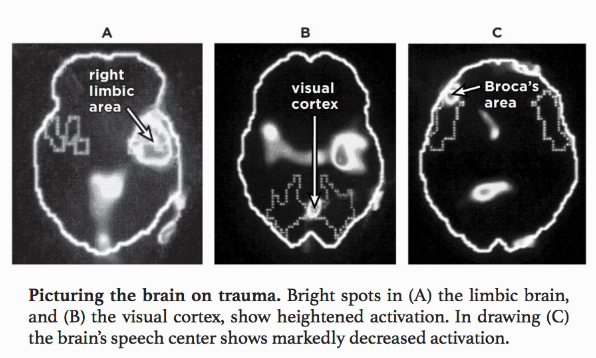An Unspeakable Horror
Traumatic flashback or stroke?
In her book, “Trauma and Recovery”, Dr. Judith Herman writes that, “remembering and telling the truth are two essential steps in the process of recovery”. Yet the neurobiological impact on the brain makes it nearly impossible for an individual to speak during or after the effects of a traumatic flashback. The phenomenon of a traumatic flashback operate as a vivid experience in which an individual is exposed to reliving some aspects of the traumatic event in the now. The composition of a traumatic flashback is said to be experienced as if watching a highlight reel of what happened but does not necessarily portray seeing images, events, and sensations in a chronological narrative.
An individual experiencing a traumatic flashback may experience any of the following:
- Seeing full or partial images of what happened
- Noticing sounds, smells or taste connected to the trauma
- Feeling physical sensations, such as pain or pressure
- Experiencing emotions that were felt during the trauma
Dr. Bessel van der Kolk, author of the critically acclaimed book, “The Body Keeps the Score”, recites results from a patient who was being medically observed at the time of their physiological reactions during a traumatic flashback. Van der Kolk expresses that the moment they turned on the tape recorder to play back an auditory narrative similar to the patient’s traumatic experience, the patient’s heart began to race, and their blood pressure jumped immensely (van der Kolk, 2015). The sole exposure to hearing something remotely related to their trauma, despite occurring 13 years prior, activated specific areas of the left frontal lobe cortex of the brain, also known as Broca’s area. The Broca’s region is responsible for the functionality of speech and is often detrimentally affected in patients who have suffered from a stroke, an instance in which the blood supply to the brain region is cut off. Without the proper functioning of Broca’s area, an individual is unable to emphasize their thoughts or feelings into words. The finalized results of the patient’s scan illustrated that Broca’s area went off-line whenever a flashback was triggered. Highlighting the notion in which the effects of trauma are not necessarily different and can overlap with the effects of physical lesions like strokes (van der Kolk, 2015).

The holistic experience of trauma is curated through a variety of physical manifestations in the body. Even years later, individuals who have experienced trauma have enormous difficulty re-telling their story. A traumatized persons bodily composition becomes completely rewired and plagued with overwhelming emotions such as terror, rage and helplessness. The medical correlation between the physical complications of a stroke and the experience of a traumatic flashback is not to be understated. Strokes’ effects on the body are often severe, similarly leaving an individual paralyzed or with the inability to speak for the remainder of their lifetime. Understanding the interplay between this phenomenon and the effects of trauma definitively highlights the intersectionality in which traumatic incidents have the ability to completely rewire the body’s autonomy and in the worst cases, permanently.
References
Herman, J. (2015). Trauma and recovery. Basic Books.
Van der Kolk, B. A. (2015). The Body Keeps the Score: brain, mind, and body in the healing of trauma. Penguin Books.